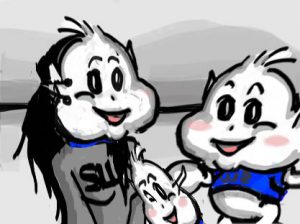If perception was reality, then the world would exist in nearly a million dimensions.
The Socio-Economic Diversity Survey conducted by Saint Louis University for Undergraduate Socio-Economic Diversity (SLU/FUSED), a committee under Student Government Association, brings to light one of those perceptions – or rather, misperceptions.
SLU students felt, for the greater part, that most other SLU students were in a higher income range than themselves.
Exactly 58.92 percent placed themselves in the “Middle class” to “Lower class” range in terms of family income; they perceived that 71.67 percent of the student body was “Upper-middle class” and “Upper class.” There is a gap between how students view themselves in relation to fellow SLU students.
The reality is that only 41.08 percent of the student body placed itself under the “Upper-middle class” and “Upper class” categories; it is not the over-whelming majority we think it is.
It is a misperception. Misperceptions prevent us from speaking to individuals who can impact our paradigms positively, who can shape our thoughts and change the arc of our lives.
This is the heart of all problems in diversity, and socio-economic issues most certainly fall under diversity.
When we view our fellow human beings as “others” and ourselves as “different” from them in some way, we change our behavior towards them; we become closed off. No longer are we speaking to equals, but to “others.”
It is incredibly disconcerting how quickly this translates into strict class divisions, racial tensions and stereotyped “cliques.”
When we see ourselves as less wealthier than our fellow students, what does this mean for our daily interactions?
Misperceptions prevent vital communication. Divisions, everything from exclusive social-circles to major gaps in economic class, discourage relationships between persons that could be rewarding and enlightening. Barriers are death to diversity.
Colliding and interacting with each other will lead us to fight barriers of communication.
We need to share our stories, bring our backgrounds into daily conversations.
Only then can we be free to share, grow and learn together as fellow students at Saint Louis University in a beautiful, unified dimension and vision of diversity.












